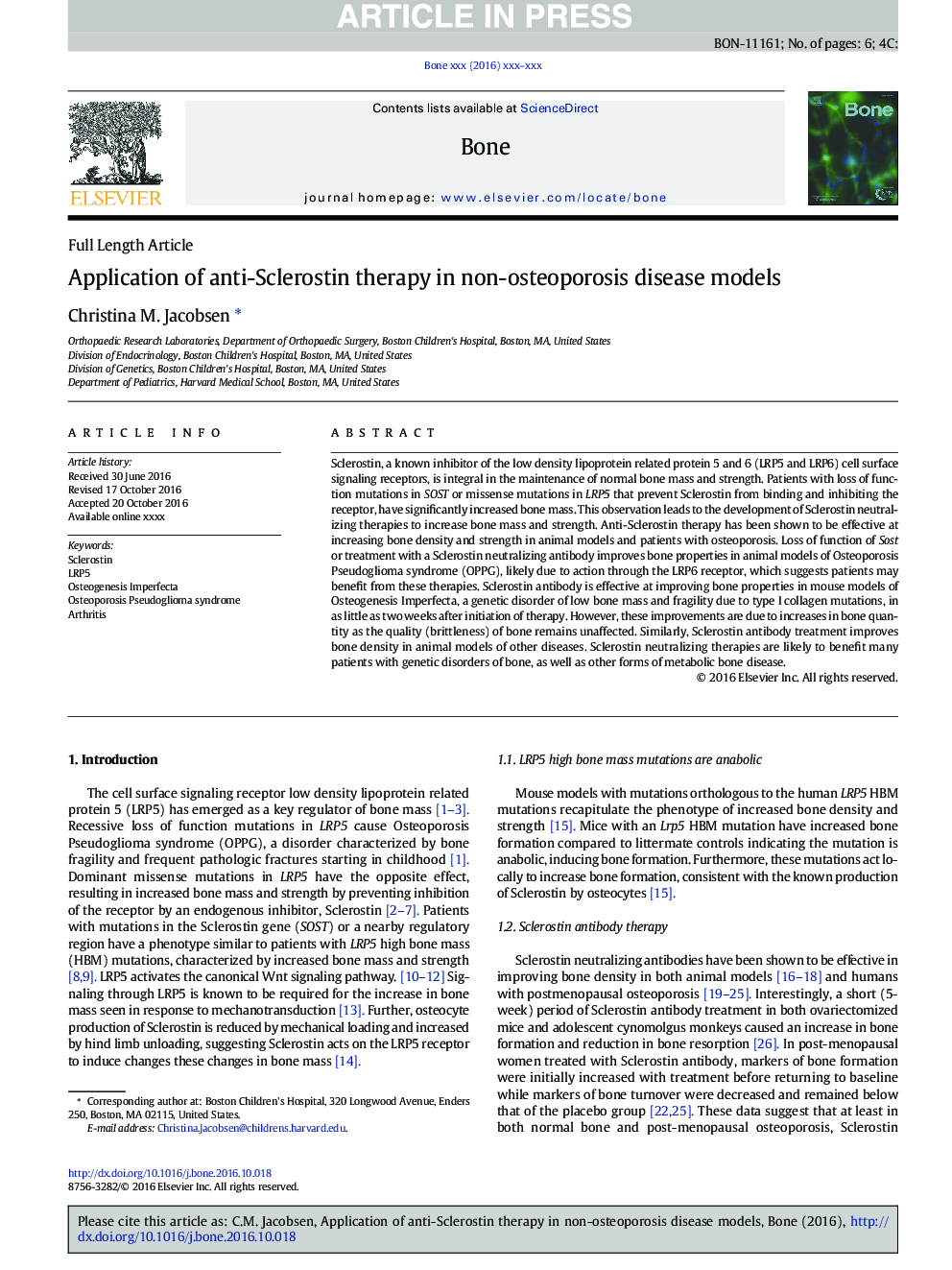| کد مقاله | کد نشریه | سال انتشار | مقاله انگلیسی | نسخه تمام متن |
|---|---|---|---|---|
| 5585109 | 1568123 | 2017 | 6 صفحه PDF | دانلود رایگان |
عنوان انگلیسی مقاله ISI
Application of anti-Sclerostin therapy in non-osteoporosis disease models
ترجمه فارسی عنوان
استفاده از درمان ضد اسکلروستین در مدل بیماری های غیر پوکی استخوان
دانلود مقاله + سفارش ترجمه
دانلود مقاله ISI انگلیسی
رایگان برای ایرانیان
کلمات کلیدی
موضوعات مرتبط
علوم زیستی و بیوفناوری
بیوشیمی، ژنتیک و زیست شناسی مولکولی
زیست شناسی تکاملی
چکیده انگلیسی
Sclerostin, a known inhibitor of the low density lipoprotein related protein 5 and 6 (LRP5 and LRP6) cell surface signaling receptors, is integral in the maintenance of normal bone mass and strength. Patients with loss of function mutations in SOST or missense mutations in LRP5 that prevent Sclerostin from binding and inhibiting the receptor, have significantly increased bone mass. This observation leads to the development of Sclerostin neutralizing therapies to increase bone mass and strength. Anti-Sclerostin therapy has been shown to be effective at increasing bone density and strength in animal models and patients with osteoporosis. Loss of function of Sost or treatment with a Sclerostin neutralizing antibody improves bone properties in animal models of Osteoporosis Pseudoglioma syndrome (OPPG), likely due to action through the LRP6 receptor, which suggests patients may benefit from these therapies. Sclerostin antibody is effective at improving bone properties in mouse models of Osteogenesis Imperfecta, a genetic disorder of low bone mass and fragility due to type I collagen mutations, in as little as two weeks after initiation of therapy. However, these improvements are due to increases in bone quantity as the quality (brittleness) of bone remains unaffected. Similarly, Sclerostin antibody treatment improves bone density in animal models of other diseases. Sclerostin neutralizing therapies are likely to benefit many patients with genetic disorders of bone, as well as other forms of metabolic bone disease.
ناشر
Database: Elsevier - ScienceDirect (ساینس دایرکت)
Journal: Bone - Volume 96, March 2017, Pages 18-23
Journal: Bone - Volume 96, March 2017, Pages 18-23
نویسندگان
Christina M. Jacobsen,
